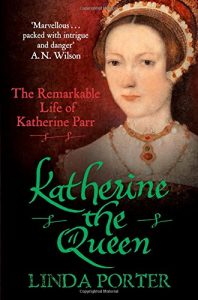Linda Porter’s new biography of Katherine Parr, raised a few questions relating to Lady Jane Grey which she has been kind enough to answer.
Thank you Linda.
You write that ‘Katherine Parr nurtured Jane’s belief through her own example, but she did not create the protestant martyr of history; the groundwork for Jane’s developing personality had been laid at home, in Bradgate.'(p304)
What was Katherine’s influence on Lady Jane Grey?
I actually think that it is hard to be precise about Katherine’s influence on Lady Jane Grey. Jane would have known about Katherine’s interest in new religious ideas and her publications and she may well have read some of them, though, so far as I know, there is no direct reference to them in any letters Jane herself wrote at the time or subsequently. As Jane seems to have lived mostly at Seymour Place while under the care of Katherine and Thomas Seymour, she most probably did not know at the time about the flirtation between Elizabeth and Katherine’s last husband (which took place at Katherine’s own houses of Chelsea and Hanworth) and her correspondence with Seymour, even if somewhat formal, suggests that she liked and trusted him.
I think she would, however, have been considerably affected by travelling with Katherine to Sudeley Castle in the last months of Katherine’s pregnancy. As a companion in these few months, she would have got to know Katherine well and must, therefore, have been distressed by the dowager queen’s swift submission to puerperal fever following the birth of Lady Mary Seymour. Leanda de Lisle says in her book on the Grey sisters that Jane and Katherine’s other ladies read the Scriptures to the queen as she lay dying.
This was perfectly in order with Katherine’s own commitment to the word of God in English and Jane’s own, later beliefs. So I think that Katherine’s influence was that of a great and godly lady, someone who was kind and set a good example. As such, she probably reinforced Jane’s own outlook and religious interests and was considered entirely suitable as an example by Jane’s parents.
You use the recently discovered ‘Streatham portrait’ to illustrate Lady Jane. Why did you choose this portrait over the Teerlinc (Yale) miniature?
I chose the Streatham (or Houghton,as it is called in the National Portrait Gallery) portrait for my second book because it is the one Eric Ives used on the front of his book and because there does seem to be doubt about the Teerlinc miniature. But then there is doubt about so many of these 16th century portraits. The truth is, there is still no portrait that can be definitively identified as that of Lady Jane Grey.
Having read the documents relating to Katherine Parr’s funeral, do they give any detail of what Jane’s role was or give any further information about her?
Jane’s role at the funeral was that of chief mourner and the documents say that an unidentified young lady carried her train. The chief mourner at these important funerals was not a member of the immediate family – Mary Tudor had been chief mourner for Jane Seymour.
The role was almost more ceremonial than personal, but Jane would have followed Katherine’s coffin into St Mary’s church at Sudeley and listened to Miles Coverdale’s sermon. As a young lady of the extended Tudor royal family, and someone who was close to Katherine towards the end of her life, she was an appropriate choice.





































